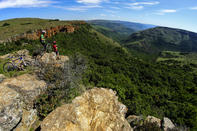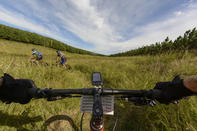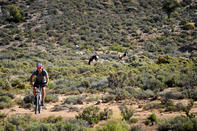History
Four decades ago, the sport was associated with a rather inauspicious term: “clunking”. Young firebrands - rebelling against the staid formality of cyclo-cross and road cycling - would bomb downhill on heavy, single-speed bikes before hitching a lift back up for a repeat run.

Until the day came when a certain lanky individual decided to laugh in the face of gravity and crank his bike back to the top of that hill...
The rebel in question happened to be Gary Fisher, who is today widely regarded as the father of contemporary mountain biking. Many things have changed since those legendary days of cranking along the ridges of Mount Tamalpais though. Off-road bikes have proliferated and the technology associated with them has evolved in quantum leaps, revolutionising MTB and the equipment associated with it.
Learn Trail by Trail

Anyone can ride a bike, but the only way of truly becoming a better rider is trail by trial. Bottom line - the more you ride, the more your ability will improve. Theory cannot be learnt from a book, and the skills required will very much depend on the type of terrain you are taking on.
Singletrack is right at the top of the pile for most riders in search of the Holy Trail, so here are a few pointers that may be of assistance next time you navigate the good stuff. Scan ahead, keeping your eyes focussed between 5–10m ahead of you, thus giving yourself enough time to prepare for any obstacles along the trail. And when faced with these gnarly sections, select the easiest line and commit to riding it at as high a speed as safely possible.
Equipment and Pricing

Decisions, decisions ... if you’ve never been off-road on two wheels, get ready to feel like a kid in a candy store. There are so many bikes to choose from, but unfortunately the variety of brand names, frames, styles and components may easily turn your shop-till-you-drop dream into a nightmare. Try to cut through the BS - that’s Bike Shop - jargon by first finding out what works for you.
First up, get a taste for the sport by signing up for a beginner’s clinic with a reputable MTB operator. This will allow you to get down and dirty on a quality bike with an experienced rider pointing out all the pros and cons.
From here onwards, there are basically only two key considerations – how much money you have and where you want to ride. If you’re a purist (or looking for a robust pavement cruiser) a rigid frame will probably suffice. Your ride will be rather bumpy if you venture off-road with this light frame sans suspension, but it is an affordable option and certainly won’t leave your budget in tatters.
Your next step up mountain biking’s evolutionary ladder will be a hard-tail, or a rigid frame with front suspension forks. Sit back and enjoy an immense improvement in control and handling on off-road tracks, with markedly less stress on your wrists, shoulders and upper body. The ultimate option is full-suspension though, especially if you’re heading onto the really rough stuff. Rear suspension allows your rear tyre to maintain contact for longer with the trail surface, making for improved trail handling, braking and energy transfer.
Important Notes

Before you get to cranking on one of SA’s lovely trails, there are a few things to be aware of. Firstly, ride responsibly! Many trails will take you through indigenous forests and protected biomes with sensitive ecosystems. Do not disturb the environment as you explore it, but rather savour the beauty it has to offer.
Some trails are situated on wine estates, farms, national parks and nature reserves. Be aware that these might cost you a fee, as you will be cranking on private property.
Be prepared for any and all weather changes - temperatures can soar or a spontaneous hail storm can hit you mid-crank. Check the local weather updates of the area you’ll be riding in regularly and dress accordingly.